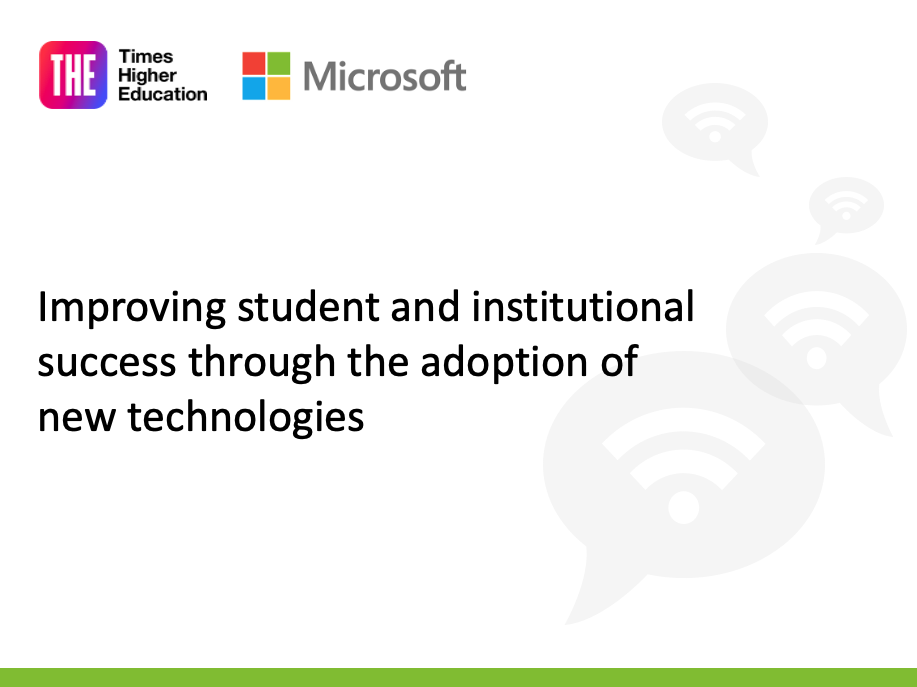The rapid advancement of technology, particularly the emergence of artificial intelligence (AI), is impacting a diverse range of industries, including higher education. Responding to the urgent need to adapt during the Covid-19 pandemic, the education sector has shown a remarkable openness to integrating new technologies to enhance the learning experience. However, it is crucial to explore how these tools can transform traditional educational approaches and address the multifaceted aspects of student and institutional success.
During a webinar held by Times Higher Education in partnership with Microsoft, a panel of experts from academia and industry discussed the implications of adopting new technologies in higher education and emphasised the importance of approaching these changes from pedagogical, institutional and humanistic perspectives.
Institutions need to assess how AI can augment curriculum design and instruction, enabling students to develop critical thinking, problem-solving and digital literacy skills. “There’s a burden for educational institutions to separate the commercial availability and the commercial hype around these tools with the affordances and constraints and how that applies to an education or learning environment,” said Sean Leahy, director of creative and emerging technologies at Arizona State University’s University Technology Office.
While the excitement surrounding AI and other emerging technologies is understandable, it is essential to approach their adoption critically. Their integration will differ in various disciplines and courses. For instance, the incorporation of AI in an entry-level computer science coding course will differ significantly from its integration in a senior-level writing composition course. Therefore, educators and institutions must engage in transparent discussions, ensuring that the implementation of new technologies aligns with the goals and requirements of each academic discipline.
The impact of AI extends beyond higher education, affecting industries across the board. From a corporate learning and development perspective, there is a growing emphasis on acquiring skills that are directly applicable to the workforce. Microskills training and the pursuit of microcredentials have gained traction, allowing individuals to build skill-based profiles tailored to their professional aspirations.
“There are opportunities to leverage AI to assess where people are today and then help them build skills, whether they’re the soft power skills or more technical skills,” said Laura Longcore, vice-president of Microsoft Worldwide Learning.
However, it is crucial to remember that AI cannot replace the human skills of deep personalisation and true creativity. “AI is making us more human and able to focus on those human sides…that maybe we didn’t have the ability or the time or space to do before,” Melissa Hortman, account technology strategist for research at Microsoft.
The integration of new technologies in higher education, particularly AI, holds immense potential for improving student and institutional success. By navigating the complexities of integrating new technologies with care and foresight, higher education can prepare students for the challenges and opportunities of the Fourth Industrial Revolution.
As technology continues to evolve, educational institutions must foster a future-orientated mindset, enabling learners to adapt, evaluate, and embrace change. “Honestly, we have to be saying, ‘if you don’t upskill, if you don’t start to take advantage of some of these tools, you will get left behind’,” concludes Katie King, CEO and author of AI in Business.
The panel:
- Melissa Hortman, technology strategist for research, Microsoft (chair)
- Katie King, CEO and author, AI in Business
- Sean Leahy, director of creative and emerging technologies, University Technology Office, Arizona State University
- Laura Longcore, vice-president, Microsoft Worldwide Learning
Watch the webinar on demand above or on the THE Connect YouTube channel.


comment